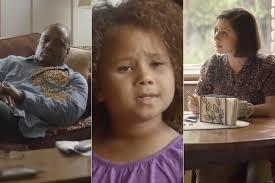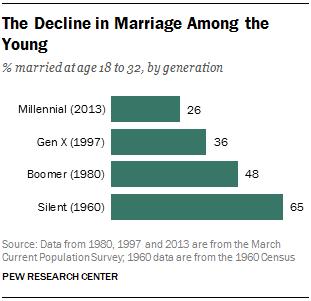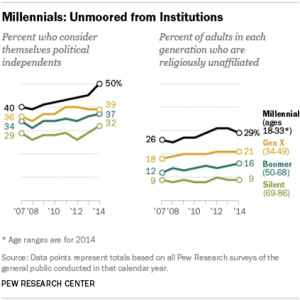 Demographics have a whole new face in America. We are not the Cleavers anymore; we truly are more like The Modern Family.
Demographics have a whole new face in America. We are not the Cleavers anymore; we truly are more like The Modern Family.
For those of us who have been in marketing for years, the ubiquitous demographics fell into chunks of age groups, marital status, presence of children, job title and ethnicities that allowed us to purchase mass audiences with ease. While those demos might change per product, the world seemed a static place. But today’s world is changing in ways we could not have imagined at the heyday of mass media. We need to adjust our thinking and our marketing to these new realities.
We have tried to capture just a few of the seismic shifts happening, as identified by Pew Research.
1. America is becoming multi-colored. Pew describes it best by saying that “we were once a black and white country. Now, we’re a rainbow.” Currently America is 64% white, 12% black, 16% Hispanic, 5% Asian and 3% other. By 2060, we are projected to be 43% white, 13% Black and 31% Hispanic. The immigrants of the early 20th century were all European. Half of all immigrants in the last half of the 20th century and early 21st century have been from Latin America. But the truth is we are moving to a much more homogenized appearance. Some 43% of Millennial adults are non-white, the highest share of any generation. The majority of Americans are estimated to be non-white by 2043.
2. Intermarriage is blurring racial lines. Racial intermarriage was frowned upon in earlier years and downright illegal in nearly one-third of the states. Today one in six marriages are inter-racial or mixed ethnicities. Even President Obama, Tiger Woods, and Bruno Mars are examples of the new mixed ethnicity and culture we see in today’s world. Half of all newborns in the United States is non-white. Stephen Stearns, a Yale professor of ecology and evolutionary biology, says globalization, immigration, cultural diffusion and the ease of modern travel will gradually homogenize the human population, averaging out many racial traits, and making the presence of brown skin much more prevalent.

4. Parenthood is valued over marriage. Maybe it’s because the stigma of out-of-wedlock births is fading, or today’s parents saw too many broken relationships among their parents. But in today’s world millennials value the parent experience over marriage. A 2010 Pew Research survey found that 52% of Millennials say being a good parent is “one of the most important things” in life. Just 30% say that having a successful marriage is one of the most important things.

6. Breadwinner Moms are prevalent. Today, four in ten households with children under 18 include mothers who are either the sole or primary source of income for the family. Some 50 years ago, that number was one in ten. The “breadwinner moms” are made up of two very different groups: 5.1 million (37%) are married mothers who have a higher income than their husbands, and 8.6 million (63%) are single mothers. This growth is tied to many trends including the fact that women make up some 47% of the today’s workforce. Today only 20% of children live in households with a married stay-at-home mother with a working husband, compared to 41% of children in 1970.
7. Young women are succeeding in education, jobs and pay. Young women are more educated than men. Thirty eight percent of women aged 25-32 have at least a four-year degree, compared with 31% of men. They are also beginning to be paid at near parity with men. Women’s earnings in this age group were 93% of their male counterparts in 2012. Another new change among married women was noted in 2012, 21% had spouses who were less educated than they were—a 3x increase from 1960.
8. Grandparents are Second Parents. One in ten children live with a grandparent and many are being cared for primarily by a grandparent. In 80% of the households where children are living with a grandparent, at least one of the child’s parents is also in the household. The reasons for this care are teen parents, disability, unemployment and parent school enrollment. Grandparents are an important force in most families. Some 75% of Boomer grandparents are involved in the raising of their grandchildren, and using that disposable income on Junior.
9. The Aging of America is happening every day. For all of our years, our age ranges have looked like a pyramid, with babies at the bottom and just a few 85+ at the top. But from 1960 to 2060, our pyramid is going to turn into a rectangle. We will have almost as many Americans over age 85 as under age 5. This is the result of longer life spans and lower birthrates. Today, 10,000 baby boomers turn 65 every day between now and 2030.

